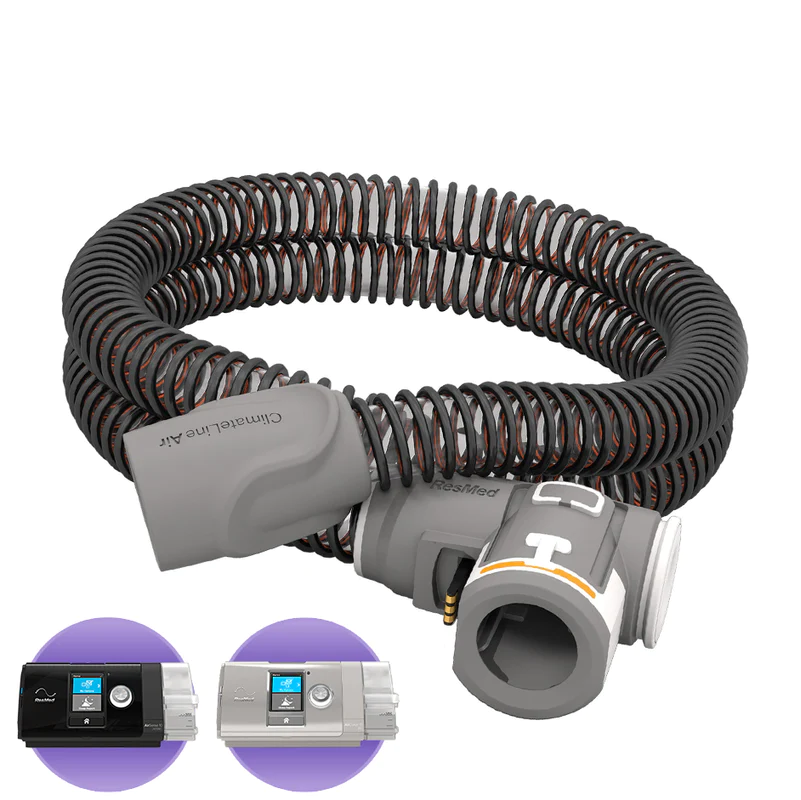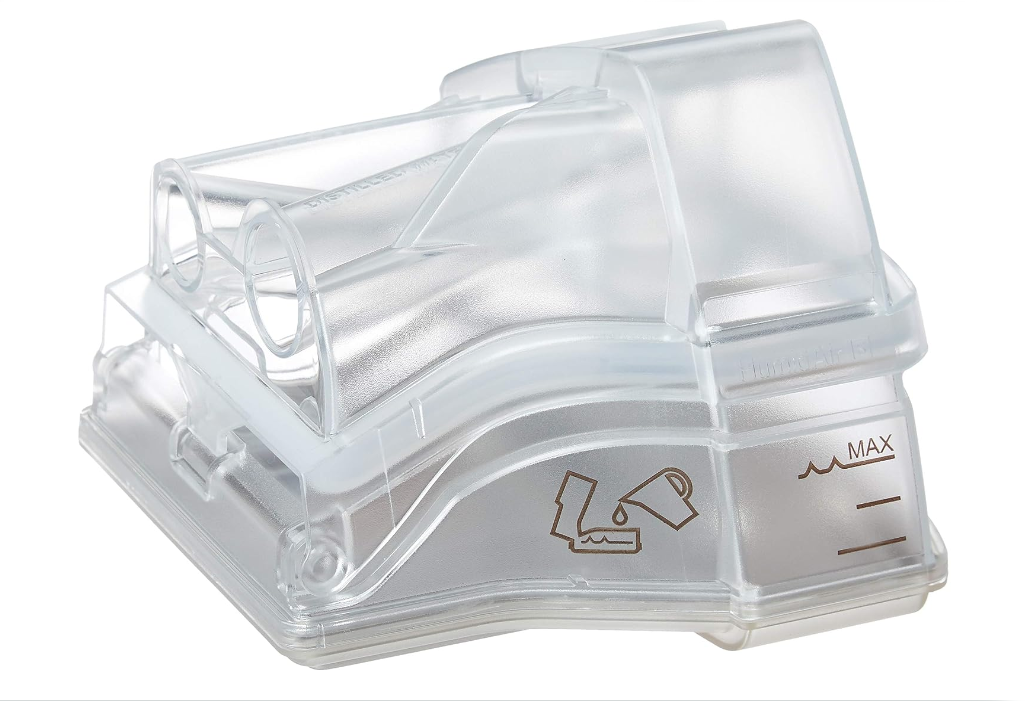Order online CPAP parts at an affordable price
CPAP devices (Continuous Positive Airway Pressure) are medical equipment used to treat respiratory diseases. It is often used to combat sleep apnea (OSA). It proved to be extremely effective in facilitating breathing and reducing symptoms of OSA.
CPAP therapy was developed in 1981 by Australian doctor Colin Sullivan. The device was developed to treat OSA, which is often the cause of sleep apnea, snoring and snoring.
CPAP machines are very useful for patients with OSA and other respiratory diseases because they provide stable air pressure during sleep, which keeps the airways open. It helps patients breathe easily without interference throughout the night, improving sleep quality and overall health.
These devices are an important treatment for respiratory diseases that help patients get quality sleep and improve their well-being and quality of life.
Accessories for the CPAP machine - a popular device for the treatment of respiratory diseases
CPAP machines are used by a wide range of patients with various respiratory diseases and disorders.
Categories of patients who can use CPAP devices:
- Patients with obstructive sleep apnea (OSA): The primary goal of OSA treatment is to avoid airway collapse during sleep. The machines help patients get the breathing support they need by adjusting the air pressure required.
- Patients with central sleep apnea (CSA): The devices will be useful for patients with CSA who need to maintain their respiratory organs during sleep.
- Patients with mixed sleep apnea: If the patient has a combination of obstructive and central sleep apnea, CPAPs tailor the therapy to their needs.
- Patients with hypopnea: This medical technique helps patients with hypopnea by providing the necessary level of breathing support.
- Overwork syndrome patients: Patients with overwork syndrome, often resulting from insufficient sleep due to OSA, may benefit from CPAP to improve the quality of their sleep.
CPAP devices can be useful for any patient who has respiratory problems and requires an individual approach to therapy. It is important that the choice of the type of therapy and the adjustment of the device is carried out under the supervision of a doctor to ensure optimal treatment results.
CPAP Parts - Order Home Delivery Parts and Accessories
The configuration of CPAP, Auto CPAP, BiPAP and VPAP sets can vary depending on the manufacturer, device model and specific user needs. However, the main components that are usually included in these sets include the following components:
- Main unit: This is the head part of the device, which generates a jet of air with the right pressure to supply it to the patient's respiratory tract.
- Oxygen tube: Connects the machine to a mask or other interfaces to supply air through the mask directly to the respiratory tract.
- Mask or other interfaces: This may be a nasal mask, nasal catheter, full face mask or other special interfaces that are provided to patients to deliver a jet of air into the respiratory tract.
- Memory cards or computer communication: Some devices may have the function of recording therapy data on a memory card or the ability to transfer this data to a computer for analysis by doctors.
- User manual: User manual and other documentation that explains how to properly use the device, care recommendations and other important information.
- Charger or power adapter: For devices with batteries, a charger, or power adapter is supplied for connecting to the mains.
- Filters: Used to clean the air of dust, bacteria and other contaminants to prevent them from entering the patient's respiratory tract.
- Additional accessories: Some models may come with additional accessories, such as masks of different sizes or spare parts and consumables such as filters.
These components provide the full functionality of CPAP, Auto CPAP, BiPAP and VPAP machines, allowing patients to receive effective therapy for the treatment of respiratory diseases.
CPAP spare parts: maintenance and operation aspects
Correct and effective use of CPAP machines is a key aspect of successful therapy of obstructive sleep apnea (OSA) and other respiratory diseases.
Tips on the proper use of CPAP equipment for effective therapy:
- Regularity of application: Use a CPAP device throughout your sleep time, including daytime rest if needed. This will help ensure stable therapy and maintain a normal breathing rhythm.
- Set up the machine correctly: Make sure the machine is properly tuned to your physiological needs and doctor's recommendations before use. This includes the correct air pressure and choosing the optimal type of mask.
- Avoid obstacles: Place the device and oxygen tube so that they do not interfere with your movements during sleep.
- Keep the device clean: Clean and disinfect the components of the machine regularly, including the mask, tubes and filters, to avoid contamination and bacteria multiplication.
- Wear the mask properly: Properly select and fit the mask to your face to prevent air leakage and ensure airflow to the airway at the optimal pressure level.
- Gradually get used to therapy: If you find it difficult to get used to using CPAP, try starting with shorter periods of therapy and then gradually increasing the duration of use.
- Use additional accessories: Use additional accessories, different types of masks, humidifiers, and special pillows for ease of sleep.
- Perform maintenance regularly: Visit a technician to check and maintain the device as recommended by the manufacturer and your doctor.
The above tips will help to maximize the use of CPAP and guarantee the optimal outcome of the treatment of respiratory diseases.
Components for sleep therapy apparatus: CPAP consumables replacement rate
Frequency of replacement of CPAP consumables.
Filters for CPAP devices need to be changed regularly, as they are responsible for cleaning the air from dust, bacteria and other contaminants, which is supplied to the patient's respiratory tract, because its intake comes from the external environment. Regular replacement of filters helps to maintain the effectiveness of therapy and prevents contamination of the device.
Typically, filters should change approximately every 1–3 months, depending on the conditions of use and the type of filter. For example, coarse filters usually need to be replaced every 1–2 months, while fine filters can withstand more time, up to 3 months.
In addition to filters, there are other consumables for CPAP that require regular replacement, including masks, oxygen tubes, spare parts and accessories. Regular updating of these components ensures the effectiveness of therapy and the safety of treatment, and also helps to maintain the comfort and convenience of using the device.
Inexpensive Parts of Sleep Apnea Treatment Apparatus - CPAP Benefits
CPAP (Continuous Positive Airway Pressure) devices have proven their effectiveness in practice due to many years of experience in the treatment of various respiratory diseases, in particular obstructive sleep apnea (OSA) and central sleep apnea (CSA).
Advantages that allowed CPAP sets to prove themselves from the best side:
- Improved sleep quality: Many patients suffering from respiratory diseases such as apnea notice an improvement in the quality of their sleep after starting CPAP therapy. They sleep better, do not wake up at night due to shortness of breath or interruption of breathing, so they feel restored and energetic during the day.
- Improved respiratory function: The use of CPAP helps to maintain open airways during sleep. This helps patients breathe more easily, reduces the risk of complications such as respiratory collapse, and improves lung function.
- Reducing the risk of cardiovascular disease: Effective treatment of sleep apnea with this therapy significantly reduces the risk of developing cardiovascular disease, such as hypertension, stroke, or coronary heart disease.
- Improvement in quality of life: Patients who regularly use these devices note an improvement in their emotional state, psychological well-being and overall quality of life.
- Reducing the risk of road accidents: People suffering from sleepy apnea increase the risk of road accidents due to drowsiness and reduced attention. Effective treatment with CPAP reduces this risk by improving sleep quality and reducing drowsiness throughout the day.
CPAP devices have proven themselves in practice as an effective method of treating respiratory diseases, but in order for them to function properly, you need to take care of them in technical terms, change out-of-order parts and replace consumables.



